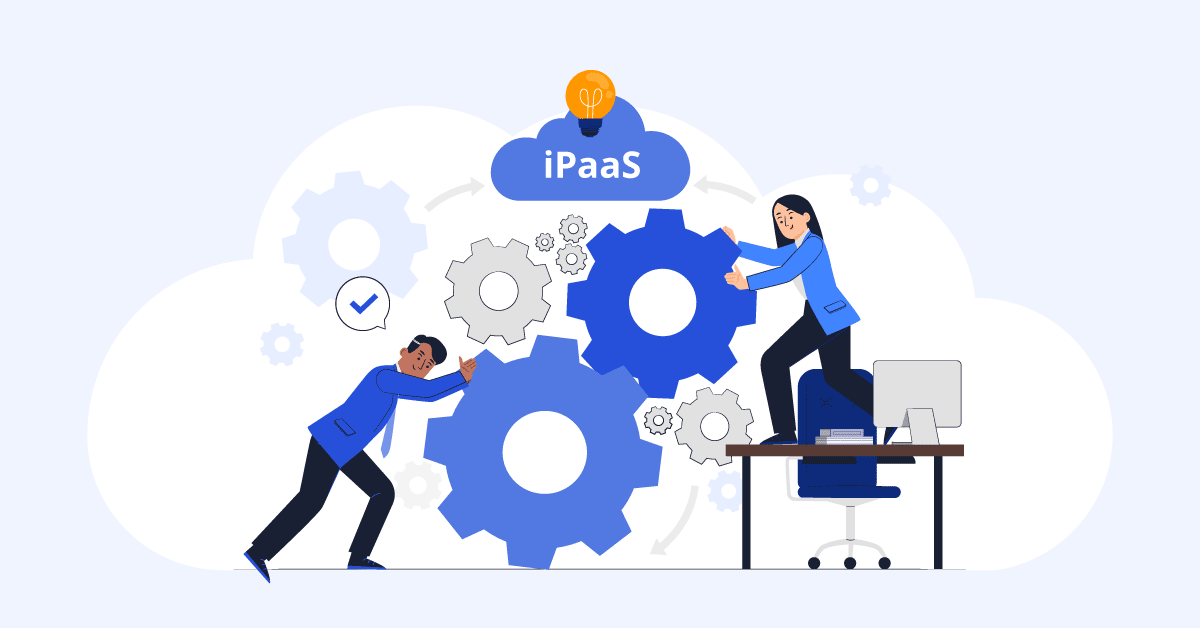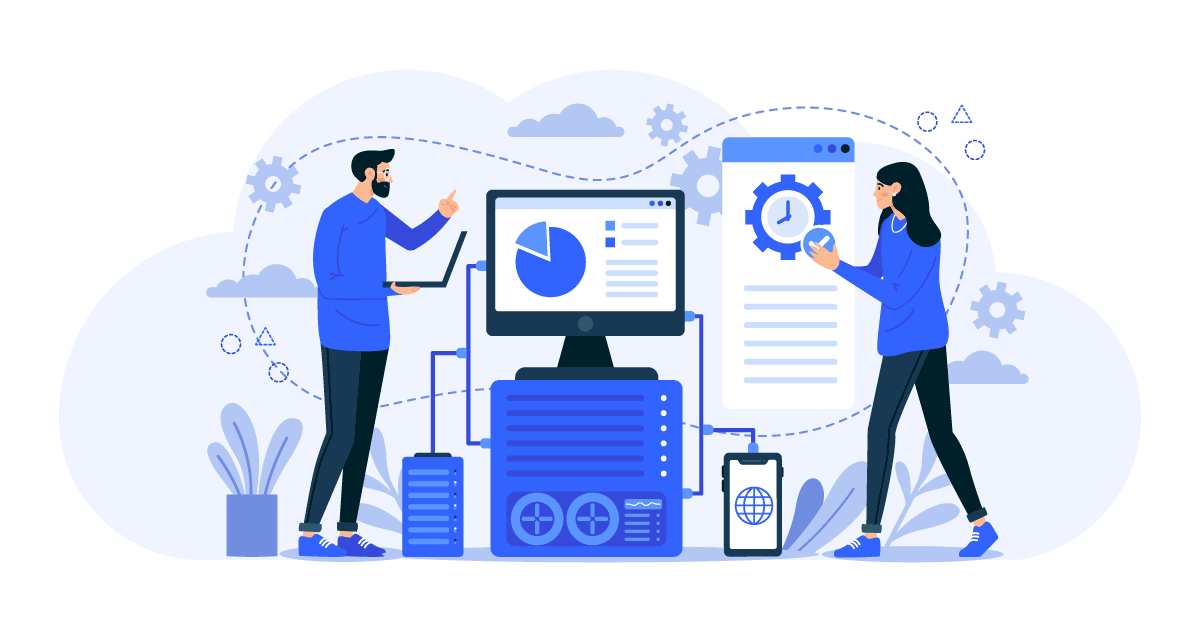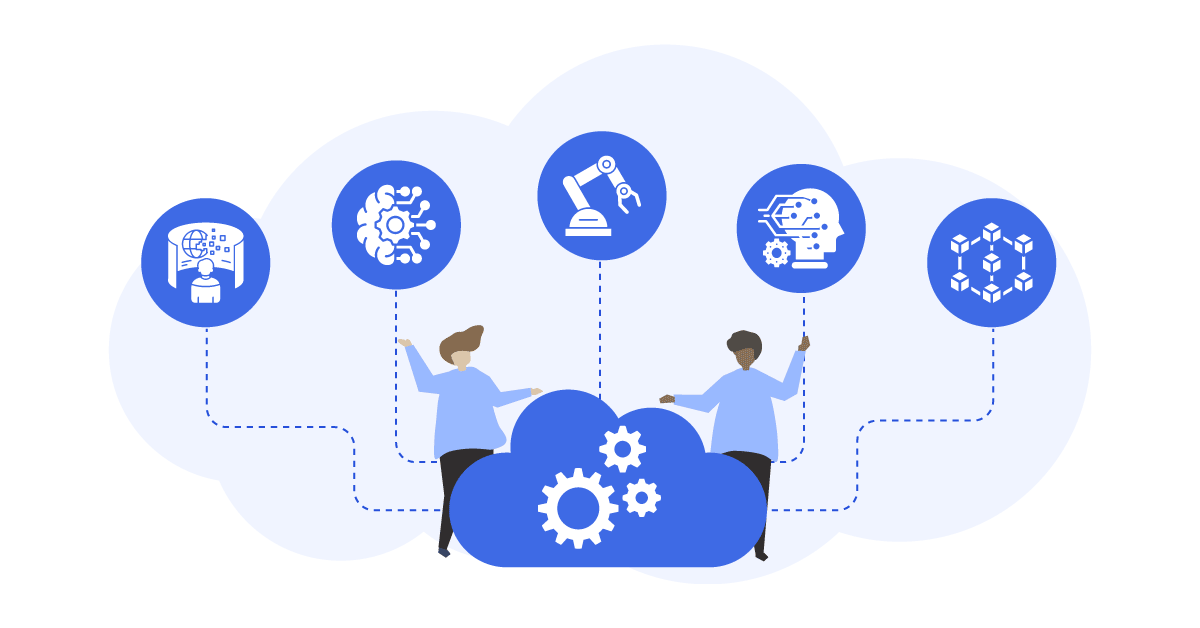The dynamic world of data management is experiencing a paradigm shift in 2024, presenting organizations with novel challenges in the realm of data integration. Navigating through the relentless surge in the volume, variety, and velocity of data has become an intricate dance, where traditional approaches find themselves stumbling. As businesses find themselves at the crossroads of information overload and operational complexities, the imperative for innovative solutions becomes glaringly evident.
In the following discourse, we embark on a journey to unravel the intricacies of the 5 Biggest Data Integration Challenges that loom large in 2024. The data landscape, characterized by its ever-expanding nature and diverse sources, demands a strategic and transformative approach to integration. Our focus will be on understanding these challenges in-depth and, more importantly, discerning how iPaaS emerges not just as a solution but as a formidable game-changer poised to surmount these obstacles. Join us as we explore the evolving contours of data integration in the contemporary business ecosystem and discover how iPaaS is reshaping the narrative.
Aonflow iPaaS – Free for First 3 Months!
Build and run up to 1,500 transactions monthly with no cost. No payment info needed!
1. Data Silos and Fragmentation
Challenge:
In the intricate web of modern enterprises, the challenge of data fragmentation persists as a formidable obstacle. The data, dispersed across various systems and departments, creates a mosaic that obstructs seamless collaboration and decision-making. The ramifications of siloed data are profound, giving rise to inefficiencies, redundant efforts, and a myopic view of business operations.
Solution:
iPaaS emerges as a catalyst for change, offering a robust solution to dismantle the barriers imposed by data silos. By intricately connecting disparate systems, applications, and databases, iPaaS transforms data integration into a cohesive and unified process. This approach not only breaks down silos but also paves the way for a collaborative environment where information flows seamlessly.
Outcomes:
Improved Data Visibility and Accessibility: The dissipation of data silos results in a newfound clarity, providing organizations with improved visibility into their data landscape. This, in turn, facilitates quicker and more informed decision-making.
Enhanced Collaboration Across Departments: With the shackles of data silos removed, departments can engage in a more collaborative exchange of information. This synergy fosters innovation, accelerates project timelines, and ultimately propels the organization toward its goals.
Increased Operational Efficiency and Agility: As data flows freely and cohesively, operational efficiency witnesses a significant boost. The organization gains agility, adapting swiftly to market changes and internal dynamics.
Who Benefits?
Enterprises with Complex Organizational Structures: Large enterprises with intricate organizational hierarchies find relief as iPaaS simplifies their data landscape, fostering a more connected and collaborative work environment.
Industries with a Multitude of Data Sources (e.g., Healthcare, Finance): Sectors dealing with diverse data sources, such as healthcare and finance, benefit from iPaaS by integrating disparate data streams. This not only streamlines processes but also enhances the accuracy and reliability of critical data-driven decisions.
2. Real-time Data Processing
Challenge:
In the era of rapid-fire decision-making, the conventional arsenal of batch processing methods finds itself inadequate. The imperative for real-time data processing capabilities has reached unprecedented heights, particularly in sectors where the currency of timely insights translates directly into competitive advantages.
Solution:
Enter iPaaS, the transformative force that addresses the shortcomings of traditional approaches. iPaaS doesn’t just offer real-time data integration and processing; it revolutionizes the speed at which businesses access the most up-to-date information. This capability is not a luxury but a necessity, especially in industries like e-commerce, finance, and logistics, where the clock is ticking, and every second is pivotal.
Outcomes:
Timely and Informed Decision-Making: The essence of real-time data processing lies in its ability to furnish decision-makers with information as events unfold. This translates to decisions made at the opportune moment, contributing to the organization’s agility and responsiveness.
Enhanced Customer Experience: In the realm of customer-centric industries like e-commerce, the ability to process and act upon real-time data is a game-changer. It enables personalized interactions, anticipates customer needs, and ultimately cultivates a superior customer experience.
Competitive Edge through Real-time Analytics: Real-time analytics, facilitated by iPaaS, provides organizations with a competitive edge. It allows for proactive strategy adjustments based on the latest market trends, customer behaviors, and operational insights.
Who Benefits?
E-commerce Platforms: In the fast-paced world of online commerce, real-time data processing is the lifeline that enables swift adaptation to market trends and customer demands. iPaaS empowers e-commerce platforms to stay ahead in the race.
Financial Institutions: In the financial sector, where microseconds can make a significant difference, real-time data processing is non-negotiable. iPaaS ensures that financial institutions have a technological ally that aligns with the pace of their operations.
Logistics and Supply Chain Companies: For logistics and supply chain entities, the ability to process real-time data is indispensable. It facilitates efficient inventory management, route optimization, and timely response to unforeseen disruptions, ensuring operations run like a well-oiled machine.
3. Data Security and Compliance
Challenge:
In an era marked by the relentless onslaught of data breaches and the tightening grip of stringent data protection regulations, the challenge of ensuring the security and compliance of integrated data has assumed paramount importance. The consequences of falling short in this arena are not merely operational but extend into the realm of legal repercussions and reputational damage.
Solution:
Enter iPaaS, not just as a conduit for data integration but as a sentinel guarding the sanctity of information. iPaaS solutions rise to the challenge by placing data security and compliance at the forefront. Robust measures, including state-of-the-art encryption, stringent authentication protocols, and meticulous access control mechanisms, are woven into the fabric of iPaaS solutions. This not only shields sensitive information from potential breaches but also positions organizations as stalwarts in adhering to the complex web of regulatory requirements.
Outcomes:
Mitigated Risk of Data Breaches: The incorporation of advanced security measures within iPaaS solutions translates into a fortified defense against the ever-evolving landscape of cyber threats. By proactively addressing vulnerabilities, iPaaS mitigates the risk of data breaches and the consequential fallout.
Compliance with Data Protection Regulations (e.g., GDPR, HIPAA): iPaaS serves as a compliance ally, ensuring that organizations navigate the intricate terrain of data protection regulations seamlessly. Whether it’s the rigorous standards of GDPR or the stringent healthcare-specific mandates of HIPAA, iPaaS facilitates adherence, mitigating legal risks.
Enhanced Trust Among Customers and Stakeholders: In an era where trust is a currency, iPaaS contributes significantly to building and maintaining it. Organizations that prioritize data security and compliance through iPaaS not only protect their interests but also garner trust from customers and stakeholders who value the responsible handling of sensitive information.
Who Benefits?
Healthcare Organizations: In the healthcare sector, where the stakes are high due to the sensitivity of patient information, iPaaS becomes a crucial ally. It ensures not only compliance with healthcare regulations but also fortifies the security infrastructure against potential breaches.
Financial Services: With financial transactions forming the backbone of this industry, the assurance of data security and compliance is non-negotiable. iPaaS provides financial services institutions with the necessary tools to uphold the trust of clients and regulators alike.
Any Industry Handling Sensitive Customer Data: From e-commerce to telecommunications, any industry that deals with sensitive customer data finds solace in iPaaS. It becomes the linchpin for ensuring that the integration of data doesn’t compromise the security and compliance standards that define responsible business practices.
Aonflow is the leading integration platform.
You can kick-start by integrating your first-ever workflow in just a matter of minutes.
4. Scalability and Flexibility
Challenge:
In the trajectory of business evolution, a common conundrum emerges – the exponential growth in data volumes and the escalating complexity of integration requirements. The challenge is palpable; traditional integration solutions, once effective, now struggle to keep pace. The inefficiency of these approaches becomes glaring as businesses expand, grappling with the need for scalability and adaptability to navigate the evolving landscape.
Solution:
Enter iPaaS, not merely as a solution but as a dynamic enabler of scalability and flexibility. iPaaS solutions redefine the paradigm, offering integration capabilities that seamlessly adapt to the changing demands of a growing business. The linchpin of this adaptability lies in the cloud-based architecture that iPaaS employs. This not only facilitates the accommodation of burgeoning data volumes but also ensures that the integration processes evolve in lockstep with the dynamic nature of modern business.
Outcomes:
Accommodation of Growing Data Volumes: iPaaS becomes the elastic framework that effortlessly expands to accommodate the burgeoning influx of data. Whether it’s the result of business expansion or increased data generation, iPaaS ensures that the integration infrastructure doesn’t buckle under the weight of growing volumes.
Adaptable to Evolving Business Processes: In a business environment where change is the only constant, iPaaS emerges as a beacon of adaptability. It doesn’t merely integrate data; it evolves with the business processes, ensuring that the integration landscape aligns harmoniously with the shifting dynamics of the organization.
Cost-Effective Scaling with Cloud Resources: The cloud-based architecture of iPaaS not only empowers scalability but does so in a cost-effective manner. Organizations can scale their data integration processes without the burden of hefty infrastructure investments, leveraging the efficiency and economy of cloud resources.
Who Benefits?
Startups and Fast-Growing Enterprises: For startups navigating the tumultuous waters of rapid growth, iPaaS becomes the technological backbone that scales organically. It ensures that integration processes grow at a pace congruent with the business, without the hindrance of scalability bottlenecks.
Industries with Seasonal Fluctuations in Data Volume: In sectors where data volumes experience seasonal ebbs and flows, iPaaS provides the flexibility to scale up or down as needed. This ensures that resources are optimally utilized, preventing unnecessary strain during peak periods and enabling efficiency during lulls.
5. Integration with Emerging Technologies
Challenge:
In the ever-evolving tapestry of technology, the integration landscape undergoes a metamorphosis with each introduction of a new paradigm. The rise of transformative technologies such as Artificial Intelligence (AI), the Internet of Things (IoT), and blockchain heralds a new era, but with it comes the formidable challenge of seamlessly integrating these innovations into existing systems. The question arises – how does one ensure a harmonious union between the established and the avant-garde?
Solution:
Enter iPaaS, not just as a bridge but as an architectural marvel designed for the future. iPaaS solutions are meticulously crafted to navigate the intricate pathways of emerging technologies. It’s not just about integration; it’s about future-proofing the integration landscape. iPaaS serves as a chameleon, adapting effortlessly to the ever-changing hues of technological innovation. The result is a platform that not only integrates with a wide spectrum of technologies but also provides organizations with a sturdy foundation for navigating the uncharted territories of AI, IoT, blockchain, and beyond.
Outcomes:
Harnessing the Power of Emerging Technologies: iPaaS transforms integration from a mere process into an opportunity for organizations to harness the transformative power of emerging technologies. It facilitates the seamless incorporation of AI, unlocking the potential of machine learning for data-driven decision-making. It integrates effortlessly with IoT, bringing real-time connectivity and insights. It aligns with blockchain, fostering transparent and secure transactions.
Future-Proof Integration Capabilities: The relentless pace of technological evolution demands more than just integration; it demands a vision for the future. iPaaS not only addresses the current needs but also fortifies organizations with a future-proof integration architecture. It’s an investment in agility, ensuring that as new technologies emerge, the integration infrastructure remains adaptable and relevant.
Competitive Advantage through Technological Innovation: iPaaS doesn’t just solve a challenge; it propels organizations into the realm of competitive advantage. By seamlessly integrating with emerging technologies, businesses gain the upper hand in innovation. They can pioneer new ways of doing business, create novel customer experiences, and stay ahead in an era where technological innovation is a differentiator.
Who Benefits?
Organizations Adopting AI and Machine Learning: For those at the forefront of AI and machine learning adoption, iPaaS becomes the conduit for maximizing the value of these technologies. It ensures that the integration journey is not a hurdle but an accelerator to the realization of AI-driven insights.
Industries Exploring IoT Applications: In sectors where IoT applications promise to revolutionize operations, iPaaS becomes the linchpin that weaves these devices into a cohesive fabric. It enables real-time data exchange, opening avenues for enhanced efficiency and strategic decision-making.
Businesses Leveraging Blockchain Technology: As blockchain technology reshapes transactional landscapes, iPaaS facilitates the integration of this revolutionary technology into existing business processes. It ensures that the benefits of blockchain, such as transparency and security, are seamlessly woven into the organizational fabric.
In conclusion, the data integration challenges of 2024 are complex and demanding, requiring innovative solutions to stay competitive. iPaaS emerges as a key enabler, addressing the challenges of data silos, real-time processing, security, scalability, and integration with emerging technologies. As businesses across various industries embrace iPaaS, they stand to benefit from improved efficiency, enhanced decision-making, and a competitive edge in today’s data-driven landscape. Whether you’re a startup experiencing rapid growth or an established enterprise navigating complex data landscapes, iPaaS is the bridge that brings your data together, unlocking the true potential of your organization in the digital era.
Aonflow iPaaS – Free for First 3 Months!
Build and run up to 1,500 transactions monthly with no cost. No payment info needed!


